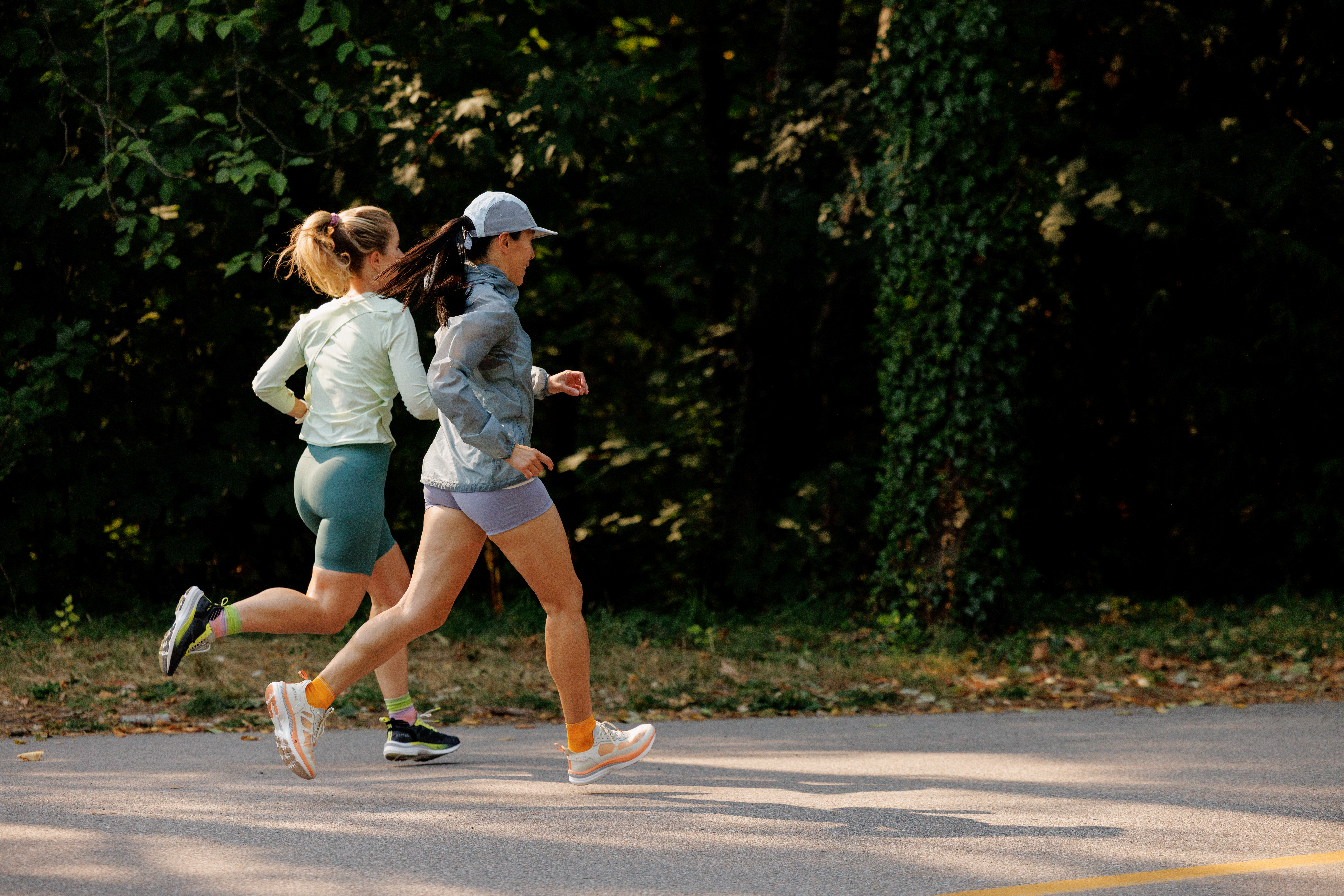When I tell Lindsay Housman about the time a running-shoe specialist analyzed my daughters’ feet and told them they’d inherited my unprepossessing trotters rather than my husband’s, she laughs. Hettas, the Vancouver-based shoe brand she co-founded, is predicated on the notion that women’s feet are different from men’s, and that they therefore may need different running shoes . So naturally my tween girls’ feet would be somewhat like mine.
“I’m a lifelong recreational athlete. My sports vary, but I’m active five to six days a week,” she says. “I started having a lot of foot problems in my early 40s, which were prohibitive to me doing anything, including walking. And that’s where I started learning more about the athletic shoe industry and just the history of athletic shoes and that they’ve been based on male anatomy and research predominantly.”
It’s a tale as old as time: in the past, men’s bodies were considered the norm, and therefore everything from medications to seatbelts could hit the market without ever really being tested on women. This practice became more widely known around 2019, when journalist Caroline Criado-Perez published her book Invisible Women. It’s the same with feet . But are there really significant differences between men’s and women’s feet that would necessitate a whole new shoe design?
There are the obvious differences, with the caveat that there is a great deal of diversity even among women: their feet are typically smaller, and women on average weigh less and are shorter than men, affecting the pressure and force on the shoes. Housman says there are many more factors. “One of the first research projects we did was a literature review with Simon Fraser University,” she says. “The shape is different—it’s more pie-shaped than a man’s foot,” she explains. “The heel is narrower, and the placement of the ankle bone is lower. Women’s fifth metatarsal—your pinky knuckle—juts out further than men’s. Women’s toes tend to curve up. Women’s insteps are shaped differently than men’s.” There are also hormonal changes that aren’t relevant to men —for example, Housman says that women in perimenopause and menopause often experience a “mystery metatarsalgia,” which irritates the ball of the foot.
How does all this data inform shoe designs? For starters, there had to be changes to the lacing, the size of the heel cup (the area that cradles the heel), and the toe box. Hettas designer Doug Sheridan, who’s been in the athletic shoe industry for 40 years, came up with an initial design. Then the company began to test the shoes, but it couldn’t find published research on female force profiles (the way the foot hits the ground). “You can find what a male force profile is, but you can’t find what a female force profile is,” Houseman says. Women “hit the ground for a different number of milliseconds. We hit the ground with a different number of newtons .” Also, she says, men’s shoes are tested four times as often as women’s are.
After figuring out the fit and initial materials, the team built the first prototype and asked women to try it. It was an iterative process that took about eight months, with women getting samples, running in the shoes, and giving feedback that would inform the next sample. “When we got to a place where we felt the shoe was runnable, we held a six-week run study in Vancouver with 60 women aged 20 to close to 70,” Housman says. The Alma Cruise, designed for long runs, launched in November 2023. The brand has now added the Alma Tempo and Alma Speed to its range.

Who’s the target audience for these shoes? Housman says they’re good for everyone, from someone just starting out with a couch-to-five-kilometre plan to an elite runner, but the test group were keen amateurs: women running three or more times a week, using a training plan, wearing a rotation of shoes, and possibly with a run coach. Does everyone need to hotfoot it to get themselves a pair of Hettas, even if they’re happy in their sneakers? Housman says no. “It comes down to the fit, your foot anatomy, your cushion preference,” she explains. “If you’re wearing a shoe that fits, and you’re pain free in that shoe, that is a good shoe for you.” That said, the right running shoes can not only reduce the likelihood of injury—they can also improve your performance. “Pain, whether it’s pain or leg fatigue, and energy return are what will help you have more bounce, and that can contribute to improvement in performance for multiple different reasons,” Housman says.
Getting—and keeping—women invested in sport is something Housman is passionate about as someone who has been active all her life and is a mother of two girls. To that end, Hettas is partnering with organizations like Girls on the Run in San Diego, Track Girlz, which was founded by U.S. Olympian Mechelle Lewis Freeman, and Yellow Running Shoes, a new Canadian group founded by Canadian Olympian Sasha Gollish. Then there are the groups that work on keeping mothers in sport, since it can be difficult for parents to find time to exercise after kids arrive; for the month of May, Hettas partnered with the organization For All Mothers. “There are a lot of new statistics out there about the number of women in leadership in C-Suite positions that have participated in sport and what those qualities are around confidence, team building, resilience that you learn through sport, and how it contributes to areas outside your life,” Housman explains.
Read more fitness stories.









